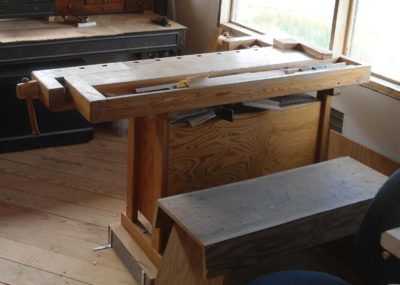Bookboards I
Some time last year I was contacted by the ancient book caretakers of the Library of Congress (LC) to inquire about some in-house training they needed in woodworking. Yes, that’s right, ancient book caretakers needed to know about woodworking. Actually I knew that because many, many years ago I had helped a colleague in the same department with a project having to do with very large format book (about the size of a Roubo original edition) that was having problems with its bookboards, or cover boards, which were made of oak. You see, the the world of old books, especially those from about 1500 and older, wooden book covers are simply part of the equation. While the specialists at LC were expert in the care of the paper contents, and their bindings, they were a bit hazy on the details and practices of fashioning the wooden boards.
Having participated in a number of collaborations with LC over my career, they asked if I could come and teach them. Of course the answer was “Yes” and we began the Dance of the Conflicting Calendars. Combined with the political brinkmanship that is endemic to Mordor on the Potomac it took many months for the training to occur last month. One of the items looming overhead was the sub rosa blustering about “shutting the government down” to accomplish some partisan goal or another. (My own attitude on that matter as a skeptical non-partisan Strict Constructionist Declarationist I wished the government would shut down, or at least retreat to its Constitutionally mandated activities, which by my count means elimination of ~90% of FedCo.)



The goal of the two-day session was to impart the knowledge and implant the muscle memory so that each member of the ancient book posse could fabricate a technically faithful book model as a practice exercise in preparation for the next time one of the ancient wooden board books needed re-binding.
So, on a bitter cold and blustery February morning I pulled up to the doors of the elegant LC Jefferson building, my CRV filled to the brim with tools and materials for them to use under my tutelage. In a caravan of carts all of these were wheeled down to the book conservation space underneath the Madison Building across the street, and I set up shop.
Only one of the crew had experience in woodworking (the fellow using the bow saw in the picture below) so I needed to start at Point Zero to review the nature of wood, tools, and the processes used in planing, sawing, etc. I brought plenty of 5/4 white oak to work with, and we got down to bidnez.

The first assignment was for everyone to use the bench bench hooks I made for them to saw a single piece to the size they needed for their book model’s boards.

Then came the flattening of one face of that board to provide a reference surface for the resawing. Given the human scale involved (this crowd was for the most part more petite than a typical woodworking gathering) they were particularly pleased with #4 planes, which are too small for my routine use.

With the flat reference face completed, next came the resawing. I’d made a Fidgen-style kerfing plane to leave with them, and they took to it like me and bacon. The final product was to be a 1/4″ thick book board, so I made the kerfing plane to create a 3/8″ thickness.


One of the more serious challenges for the exercise is that as a book conservation unit they were not well equipped for woodworking in the bench category. Their only bench was an ancient and wobbly Sjoberg hobby bench.



I have one exactly like it that I got out of the trash many years ago. Frankly if I had to use one like this every day it would end in the trash too. I completely remade mine, mounted it on some 4″ slippers to get it to a decent working height, and screwed the entire thing to the floor, resulting in a very nice and oft-used work station. Mine is currently ensconced in the corner, perhaps not coincidentally closest to the propane furnace, and is dedicated to the finer work of decorative objects conservation, gunsmithing, etc.

I will do my best to address their lack of a decent workbench, hoping to make and donate a mini-Roubo in the coming months. But for now, all we had was a wobbly little bench and some mobile work tables.

Then the resawing began with a variety of saws, and thus endeth Day One.


Join the Conversation!